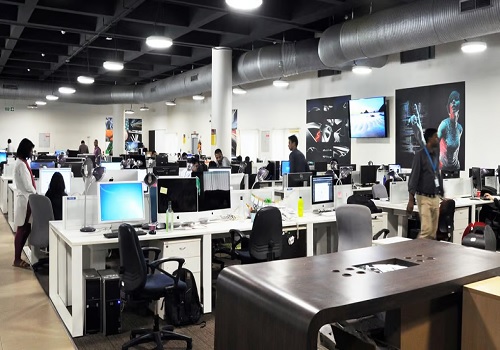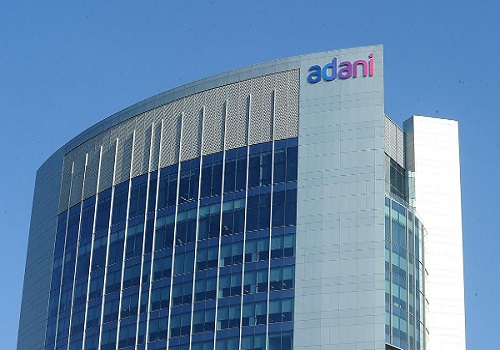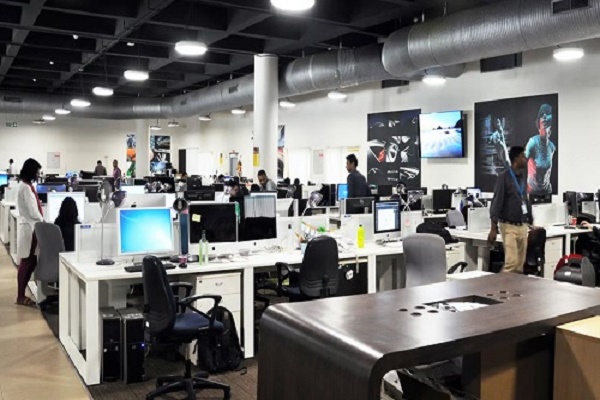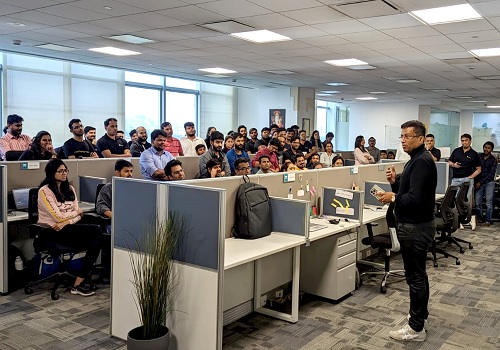Technology Sector Update : Client watch - Readthroughs from client earnings By Motilal Oswal Financial Services Ltd
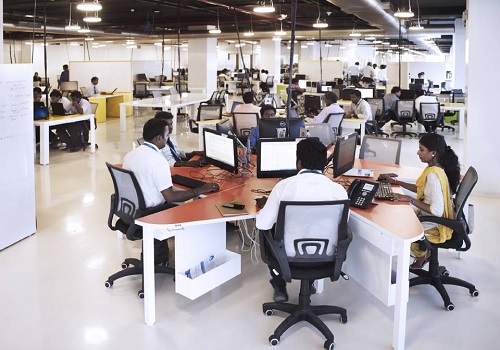
Client watch: Readthroughs from client earnings
* This quarter’s global earnings season signals a growing divergence in enterprise tech priorities. On one hand, compute infra—especially cloud, AI, and cybersecurity—is seeing steady-state CEO-mandated demand, with hyperscalers like Microsoft and Google guiding to record capex spends (MSFT: >USD30b; GOOGL: USD85b for CY25). On the other hand, software and service players like SAP and Snowflake flagged elongated sales cycles and macro-driven caution, particularly in the public sector and Europe.
* Meanwhile, US banks are holding the line on tech spend, despite geopolitical overhangs; investment in AI and automation remains core to productivity and client engagement.
* We believe tech spending may remain cautious in the near term as clients navigate ongoing macro uncertainty. However, BFSI continues to act as a haven. We continue to prefer bottom-up plays in IT: HCLT and TECHM in large caps and COFORGE in midtier.
US hyperscalers: Capex intensity ramps up
MSFT and GOOGL continue to witness strong demand in cloud & AI offerings. Both have guided for heavy capex to fund cloud services and data center capabilities. MSFT guided for capex of over USD30b in the upcoming quarter (+50% YoY), while Alphabet raised its full-year capex guidance to USD85b from USD75b
MSFT
On macro and demand trends:
* Demand for Azure and AI infrastructure is higher than supply, with the company expecting to remain capacity-constrained through the first half of its fiscal year.
Guidance/Technology spending outlook:
* The company expects double-digit revenue and operating margin growth in FY26.
* The focus is on investing in its AI platform and delivering capacity to support its significant USD368b contracted backlog.
GOOGL (2QCY25)
On macro and demand trends:
* Demand for Google Cloud products is high, with the backlog reaching USD106b (up 38% YoY), and the company expects to remain in a tight demand-supply environment through 2026.
Guidance/Technology spending outlook:
* Overall business momentum remains strong, but the company notes that YoY advertising revenue comparisons in the second half of 2025 will be affected by lapping strong 2024 results in financial services and the US elections.
US ERP service providers: Sales cycle elongated
Major highlights: SAP reported 19% growth in cloud revenue and is seeing strong deals driven by AI use cases. Meanwhile, ServiceNow and Oracle are experiencing a reprioritization of budgets to AI investments. Oracle noted that its Oracle Cloud Infrastructure (OCI) platform is experiencing unprecedented demand. ServiceNow upgraded its full-year guidance; however, its commentary was cautious, as clients focus on optimizing existing workloads before pursuing expansion.
SAP (2QCY25)
On macro and demand trends:
* Continued uncertainty in global markets has led to elongated sales cycles, particularly in the US public sector and manufacturing.
Guidance/Technology spending outlook:
* The company maintains its full-year 2025 outlook and is focused on disciplined execution amid an uncertain macro environment.
* Business AI adoption is set to accelerate, with over half of Q2 cloud order entries coming from deals that include AI use cases. SAP is launching numerous AI agents and expanding its Business Data Cloud offering to drive productivity.
ServiceNow (2QCY25)
On macro and demand trends:
* Despite macro uncertainties, ServiceNow continues to see resilient demand. The US federal market remains under pressure due to tighter budgets and shifting mission priorities.
Guidance/Technology spending outlook:
* Subscription revenue guidance was raised by USD125m, representing ~20% YoY growth (19.5-20% in constant currency).
* The company notes that IT budgets are increasingly reprioritized toward strategic, mission-critical AI investments. Enterprises are consolidating spend away from fragmented legacy stacks and toward integrated platforms that deliver measurable business outcomes.
Oracle (4QFY25)
On macro and demand trends:
* Demand for OCI services is outpacing supply. The company is actively scheduling customers for future onboarding due to capacity constraints, an unprecedented situation in its history.
Guidance/Technology spending outlook:
* For FY26, total cloud revenue is expected to grow over 40%, and cloud infrastructure revenue over 70%. RPO is likely to grow more than 100%.
* GenAI workloads are expected to make up a meaningful portion of OCI revenue in FY25 and beyond.
Crowdstrike (1QFY26)
On macro and demand trends:
* Crowdstrike is capitalizing on accelerated demand through increasing win rates and platform consolidation. Cybersecurity remains critical in an AI-accelerated threat environment, and demand for the Falcon platform is strong.
Guidance/Technology spending outlook:
* The proliferation of autonomous AI agents dramatically increases the enterprise attack surface in size, severity, and speed. The company launched Charlotte AI for Security Analysts and Raptor AI for threat prevention, both driving upsell potential and increasing platform stickiness.
Snowflake (1QFY26)
On macro and demand trends:
* Snowflake acknowledged ongoing macro uncertainty, particularly in Europe and within certain large enterprise segments. However, enterprises continue to prioritize data and AI investments.
Guidance/Technology spending outlook:
* Snowflake observed that customers are optimizing existing workloads before expanding, leading to more measured consumption
US banks’ earnings: Automated operations cornerstone
Major highlights: US banks are ramping up AI and digital investments, with J.P. Morgan guiding USD95.5b in 2025 expenses (~4.5% growth YoY) and focusing on Payments and AI. Goldman and Citi are targeting advisory and trade finance through automation and cloud. Wells Fargo holds steady at USD54.2b, prioritizing digital and ops simplification. Macro sentiment is still cautious due to lingering geopolitical and tariff risks.
J.P. Morgan Chase
On macro and demand trends:
Management highlighted a dynamic macro backdrop, with client activity remaining resilient across businesses amid ongoing volatility in rates and geopolitics. Strength was observed in wholesale lending and card outstandings, while Payments and Securities Services saw strong deposit growth.
Technology spending outlook:
Expense guidance for 2025 is now set at USD95.5b, reflecting continued investments in technology, compensation, and distribution. Technology efforts focus on strengthening payments platforms and AI enablement. Management views these investments as foundational, with ongoing modernization and analytics playing a central role.
Morgan Stanley
On macro and demand trends:
Strategic client engagement continues despite delays in M&A and IPO activities, with a ‘pause, not delete’ outlook driven by potentially transitory headwinds. The firm expects capital raising, management, and allocation to continue, as corporates and investors remain focused on strategic priorities across trade, energy, and technology.
Technology spending outlook:
AI is being leveraged to enhance productivity and improve client engagement across institutional and wealth management platforms. Focus areas include enhancing electronic trading, scaling self-directed, and advisor-led platforms.
Wells Fargo
On macro and demand trends:
With the asset cap lifted, the bank is strategically reallocating balance sheet capacity toward growth in deposits, loans, and trading assets. Clients generally remain in strong financial condition, though caution persists amid trade-related uncertainty and a competitive lending environment.
Technology spending outlook:
The USD54.2b non-interest expense target for 2025 remains unchanged and includes increased investment in digital capabilities, branch refurbishment, and AI initiatives. Technology priorities span automated operations and infrastructure simplification.
Goldman Sachs
On macro and demand trends:
CEO confidence has improved, driven by a narrowing range of macro outcomes around trade and tariffs, supporting robust M&A execution. Activity in capital markets is gaining momentum, with backlog growth across advisory.
Technology spending outlook:
Goldman Sachs is investing broadly in AI and digital infrastructure to capture generational growth opportunities across financing and advisory
Citibank
On macro and demand trends:
The firm sees opportunities in strong corporate activity, particularly in global trade finance and treasury services. Sentiment shows variation across regions, especially emerging markets
Technology spending outlook:
Technology investments remain a priority, with continued focus on infrastructure modernization, compliance efficiency, and digital client platforms. Spend is aligned to support automation and cloud-based transformation to enhance scalability and cost efficiency.
Bank of America
On macro and demand trends:
Management sees economic growth continuing through the second half of 2025, though geopolitical uncertainty and tariff policies add complexity. Loan and deposit momentum remains positive, while commercial and consumer credit quality stays strong.
Technology spending outlook:
Investments in digital and AI remain core to driving operational leverage. AI tools such as the ‘Erica’ platform are scaling across units, targeting efficiency and client service enhancements.
PNC Financial Services
On macro and demand trends:
Loan activity is supported both by new production and tariff-driven inventory needs, though leadership remains cautious on forecasting sustained acceleration.
Technology spending outlook:
The expense outlook for 2025 includes continued technology and digital investments. AI and automation are helping reduce fraud and back-office costs while enabling front-end process improvements
TECHM/HCLT and COFORGE remain our top picks
* Among Tier-I players, we prefer TECHM, driven by early signs of transformation under the new leadership and improving execution in BFSI. Margin expectations are now more reasonable, and niche offerings are resonating well. We believe TECHM’s transformation remains relatively decoupled from discretionary spending. With further scope for telecom recovery and operational efficiency, we see room for sustained margin expansion going forward. We continue to like HCLT for its all-weather portfolio, as it remains the fastest-growing large-cap IT services company.
* Among Tier-II players, our top pick is COFORGE. The company’s strong offerings in BFS and insurance should enable it to participate in a demand recovery, and a strong TCV also indicates a robust near-term growth outlook. We believe COFORGE’s organic business is in great shape, and early cross-selling initiatives between COFORGE and Cigniti indicate that COFORGE could engineer a growth turnaround at Cigniti earlier than expected.
For More Research Reports : Click Here
For More Motilal Oswal Securities Ltd Disclaimer
http://www.motilaloswal.com/MOSLdisclaimer/disclaimer.html
SEBI Registration number is INH000000412
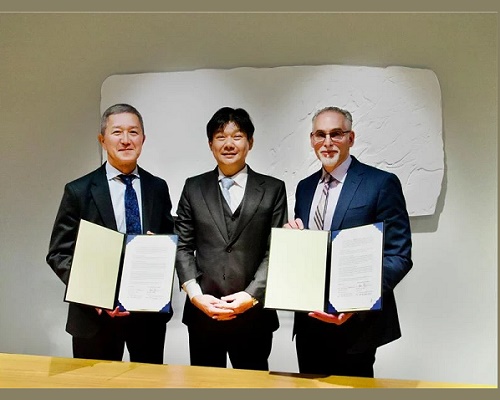









More News
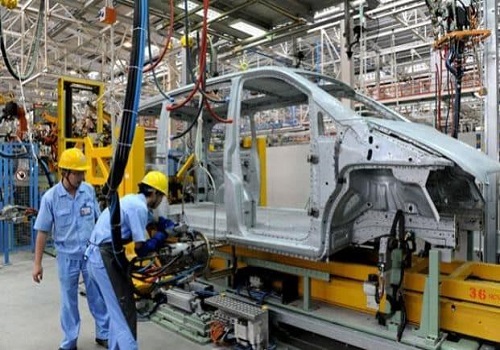
Automobiles Sector Update : Two-wheeler industry underperforms expectations by Motilal Oswal...

